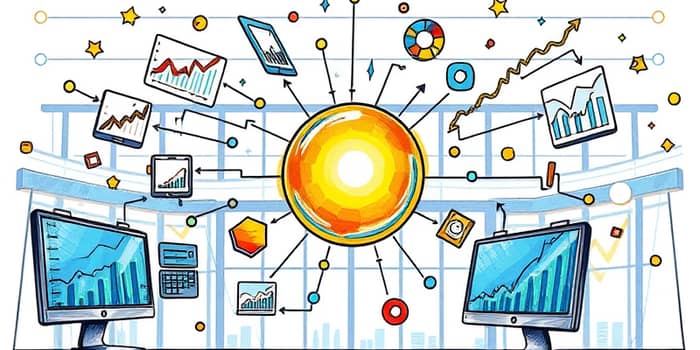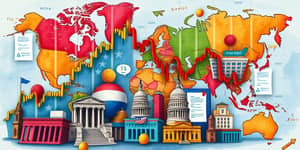In today’s data-driven world, businesses need precise insights to stay ahead of the curve. By leveraging the right forecasting tools and methodologies, organizations can anticipate market shifts and make informed decisions.
Overview of Sales Forecasting Software in 2025
The year 2025 brings an array of advanced platforms designed to serve companies of every size. From small startups to global enterprises, the market offers solutions tailored to diverse forecasting requirements.
These platforms combine interactive dashboards, historical data analysis, and artificial intelligence to deliver real-time forecasting CRM with deal outcome prediction and comprehensive performance tracking.
Top Sales Forecasting Tools
A wide variety of tools stand out for their robust features and adaptability. They can be grouped into three main categories: CRM-based solutions, specialized forecasting platforms, and advanced statistical software. Each category addresses unique business needs and integration levels.
CRM-based Solutions
- MeetRecord: AI-driven analysis and deal risk identification for SMBs and mid-sized businesses, offering revenue intelligence and coaching.
- Pipedrive CRM: Sales pipeline management with built-in revenue forecasting and AI projections suitable for all business scales.
- Zoho CRM: Integrated Zia AI assistant for automated sales forecasting and anomaly detection within existing workflows.
- HubSpot: An all-in-one platform that integrates pipeline monitoring, forecasting, and marketing analytics in a unified interface.
- Salesforce: A cloud-based powerhouse with Einstein Copilot tools delivering predictive insights and customizable forecast models.
- Zendesk Sell: Provides real-time forecasting CRM with deal outcome prediction and intuitive sales performance metrics.
Specialized Forecasting Tools
- Forecastio: Offers multi-method AI projections and scenario analysis, particularly effective for HubSpot users, starting at $119/month.
- Clari: A revenue intelligence platform with predictive analytics and pipeline health scoring for enterprise environments.
- Anaplan: Designed for large organizations, delivering granular forecasts by geography, product line, and business unit.
- Aviso: Combines AI-driven sales insights with collaborative forecasting workflows to boost accuracy.
- Mediafly (formerly InsightSquared): Hyper-specific reporting tools that generate segmented forecasts by region, product, and line of business.
Advanced Statistical Solutions
- SAS Forecast Server: A powerful statistical modeling tool with automated outlier detection and what-if scenario planning, ideal for data experts.
- Avercast: Features over 200 forecasting algorithms for detailed demand planning, with pricing from $1,000/month.
- Prophix: Role-based financial planning software that merges live actuals and historical data to produce rolling forecasts.
Forecasting Methodologies
Choosing the appropriate methodology is critical for accuracy. Two widely adopted approaches include time series analysis and multi-method forecasting.
Time Series Analysis
Time series analysis examines historical data to detect trends, seasonality, and cyclic patterns. By decomposing data into stable trends and recurring fluctuations, organizations can build models that predict future performance.
Common time series models include:
Autoregressive (AR) models, Integrated (I) models, and Moving Average (MA) models, often combined into ARIMA frameworks for enhanced precision.
Multiple Forecasting Approaches
Platforms like Forecastio allow users to compare methods—such as exponential smoothing, regression-based predictions, and machine learning techniques—selecting the one that best aligns with their sales cycle and data structure.
This flexibility empowers teams to adopt machine learning for prediction accuracy and refine models as market conditions evolve.
Implementation Considerations
When integrating forecasting tools, consider compatibility and ease of setup. Solutions offering robust APIs and pre-built connectors ensure smooth data flow between CRMs and BI platforms.
Business size compatibility matters: SMB-friendly tools require minimal onboarding, while enterprise-grade platforms may need dedicated IT resources and extended training.
Evaluate pricing structures carefully. Subscription fees range from under $120 to over $1,000 per month, depending on feature depth and user count.
Effective visualization capabilities—such as charts, graphs, and interactive dashboards—transform raw numbers into actionable insights, enhancing stakeholder buy-in.
Broader Business Intelligence Context
Forecasting tools should integrate within a comprehensive BI framework that centralizes historical and real-time data. This approach prevents information silos and promotes consistent performance benchmarking against industry peers.
Enterprise information systems leverage standardized data schemas to maintain accuracy and support cross-departmental collaboration, ensuring forecasting outputs influence strategic planning.
Conclusion
By selecting the right mix of software and methodologies, businesses can unlock powerful forecasting capabilities. Whether you are a small team seeking quick insights or a global enterprise managing complex portfolios, the tools outlined here offer scalable solutions for every stage of growth.
Embrace these innovations today to transform raw data into clear foresight and gain a competitive edge in your market.
References
- https://www.meetrecord.com/blog/best-sales-forecasting-software
- https://zapier.com/blog/sales-forecasting-software/
- https://thecmo.com/marketing-operations/sales-forecasting-methods/
- https://www.cloudzero.com/blog/forecasting-tools/
- https://www.zendesk.com/sell/features/sales-forecasting-software/
- https://careerfoundry.com/en/blog/data-analytics/data-analysis-techniques/
- https://forecastio.ai/blog/sales-forecasting-software










